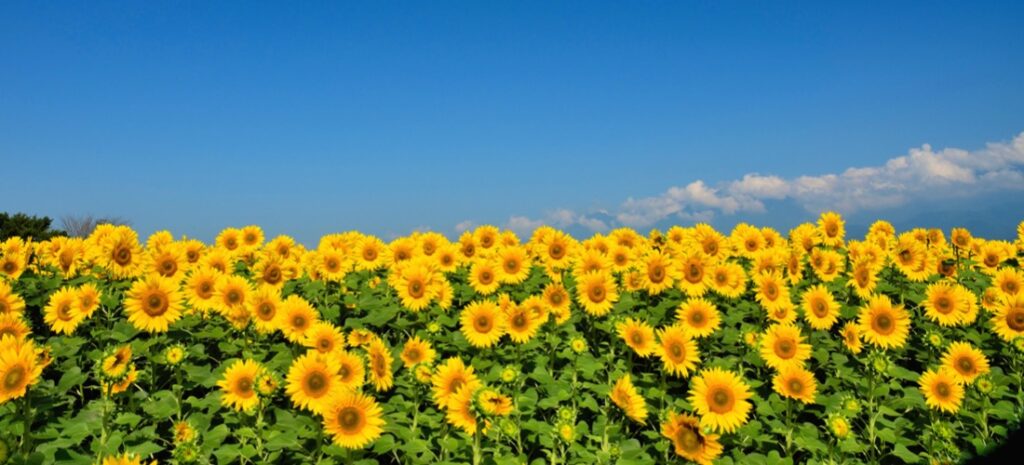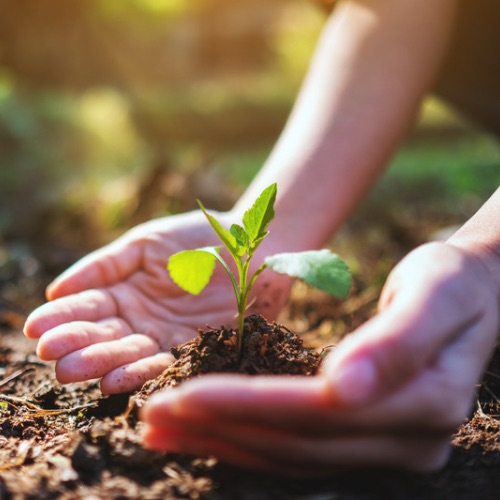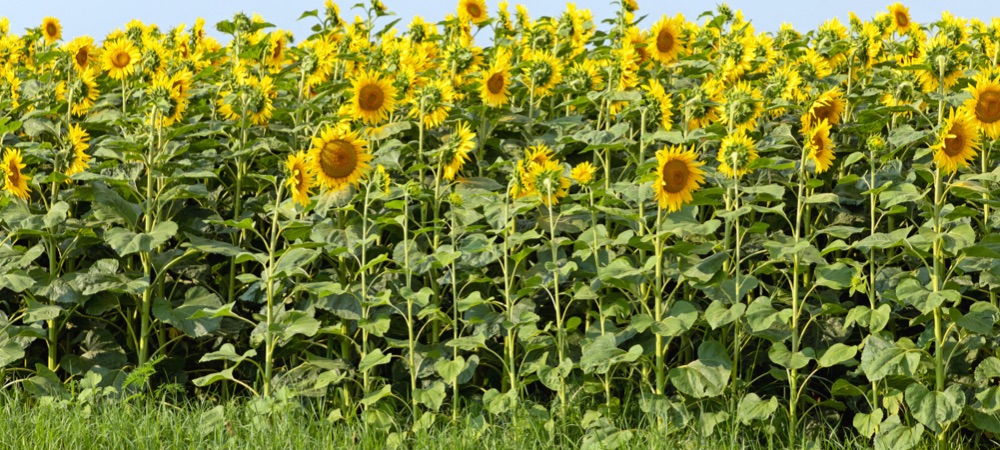Sunflowers are one of the most recognizable flowers in the world. Their large yellow blooms seem to follow the sun as it moves across the sky, and their seeds are enjoyed by humans and animals alike. Sunflowers are native to North America, and they have been cultivated for thousands of years.

In fact, sunflowers were once a staple crop of the native people of the plains states. Today, sunflowers are grown all over the world, and they are prized for their beauty and usefulness. Sunflower oil is a healthy cooking oil, and sunflower seeds are a nutritious snack. Sunflowers are also popular cut flowers, and they often grace wedding tables and bouquets. With their cheerful disposition and stunning blooms, it’s no wonder that sunflowers are one of the most beloved flowers in the world.
When to plant sunflower seeds
If you want to grow sunflowers, you will need to start with sunflower seeds. You can plant sunflower seeds directly in the ground after the last frost date in your area, or you can start them indoors in pots. Sunflowers need full sun.
Where to plant sunflower seeds
Sunflowers are not particular about soil, but they do prefer well-drained soil with a lot of organic matter. If your soil is heavy or clay-like, you may want to amend it with some compost before planting. Sunflowers are also not particular about pH, but they do prefer slightly acidic soil.
Steps to Plant Sunflower
If you want to grow your own sunflowers, you’ll be happy to know that they are relatively easy to care for. Sunflowers are tough plants that can tolerate a wide range of growing conditions. They are also fast-growing, so you’ll soon be rewarded with a beautiful display of yellow blooms.

If you’d like to grow sunflowers, you can start by planting sunflower seeds. Sunflower seeds can be planted directly in the ground after the last frost date in your area. To plant sunflower seeds, simply dig a small hole in the soil and drop in 2-3 seeds. Be sure to space the seeds about 12 inches apart, as sunflowers can grow to be quite large. Once the seeds have been planted, water them well and keep the soil moist. The sunflower seeds should germinate in 7-10 days.
Once the sunflower seedlings have emerged, thin them out so that only the strongest plant remains. When the sunflowers are about 6 inches tall, you can fertilize them with a general purpose fertilizer. Be sure to water the sunflowers regularly, as they will need 1-2 inches of water per week.
As the sunflowers begin to bloom, you may notice that the heads are nodding toward the ground. This is perfectly normal, and it’s called “nodding.” The sunflower heads will eventually turn back toward the sun, but you can help them out by staking them up with some twine or string.
Once the sunflowers have bloomed, you can enjoy their beauty or harvest their seeds. To harvest the seeds, simply cut the heads off of the sunflowers and dry them in a warm, dry place. Once the seeds are dry, you can store them in an airtight container and enjoy them throughout the winter.
How to care for sunflower
Sunflowers are one of the most cheerful flowers you can grow in your garden. With their large, bright blooms, they definitely make a statement. While they’re fairly easy to care for, there are a few things you should keep in mind to ensure that your sunflowers thrive. First of all, they need full sun in order to grow well. Plant them in an area that gets at least six hours of direct sunlight each day.

Secondly, they need well-draining soil. Sunflowers have shallow roots, so if the soil is too wet, the roots will rot. Thirdly, be sure to water regularly. Sunflowers are drought-tolerant, but they will produce more flowers if they’re given enough water. Lastly, don’t forget to fertilize. Sunflowers are heavy feeders, so fertilize them once a month with a balanced fertilizer. With a little care and attention, you’ll have a beautiful crop of sunflowers that will brighten up your garden all summer long.
Harvesting Sunflower
Harvest sunflower when the back of the head is brown and the bracts (large, leaf-like structures) are drooping. This usually occurs about two months after planting. To harvest, cut the stem about 6 inches below the head with a sharp knife or pruning shears. Take care not to damage the plant as this can affect its ability to produce seeds in the future. If you are growing sunflowers for their seeds, allow the heads to dry in a cool, dark place for at least two weeks before harvesting. When the seeds are dry, they will easily fall out of the head. Store them in an airtight container in a cool, dark place and they will remain viable for several years.
Landscape ideas with sunflower
Their bright yellow petals and big brown centers make them a cheerful addition to any garden. Sunflowers are also surprisingly versatile, and can be used in a variety of landscape design ideas. For example, sunflowers can be planted along a fence line to create a living privacy screen. Or, they can be planted in groupings to create an eye-catching focal point in a garden bed. Sunflowers are even drought-tolerant, making them a perfect choice for sunny locations. So why not add some sunflowers to your landscape this year? With a little creativity, they can brighten up any space.
Frequently Asked Questions About Sunflowers
Q: How tall do sunflowers grow?
A: Sunflowers can grow to be quite tall, sometimes reaching heights of 10 feet or more. However, there are also dwarf varieties that only grow to be about 2-3 feet tall.
Q: What kind of soil do sunflowers need?
A: Sunflowers need well-draining soil in order to thrive.
Q: How often should I water my sunflowers?
A: Sunflowers need about 1-2 inches of water per week. However, they are drought-tolerant and can withstand periods of dry weather.
Q: Can I eat the sunflower seeds?
A: Yes, sunflower seeds are edible and make a great snack. You can also use them in baking or to make sunflower seed oil.
Q: What is the best way to store sunflower seeds?
A: Sunflower seeds can be stored in an airtight container in a cool, dry place.
